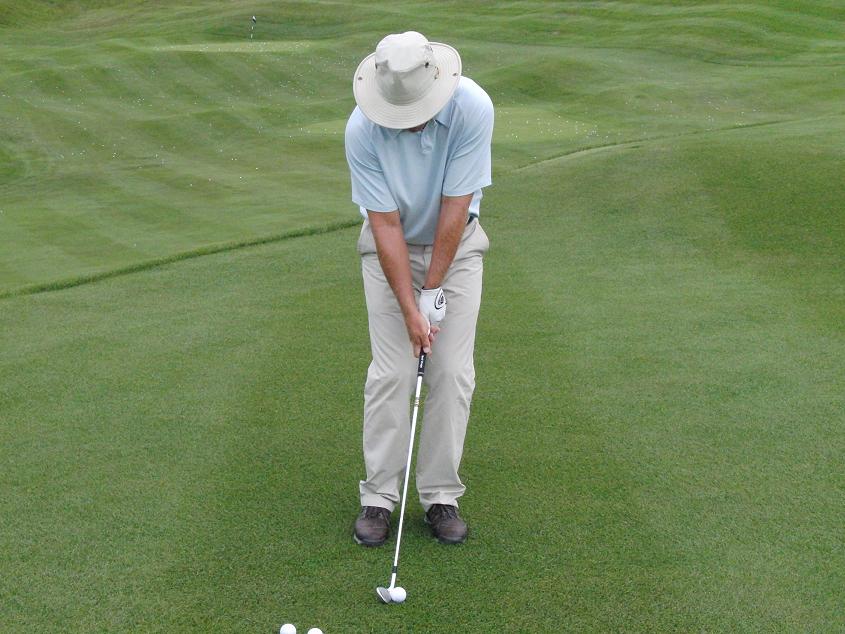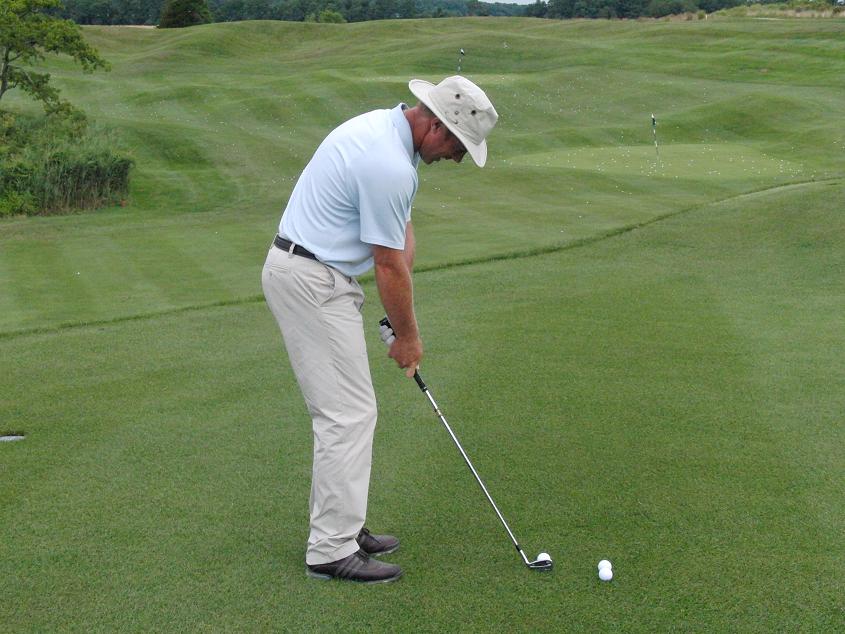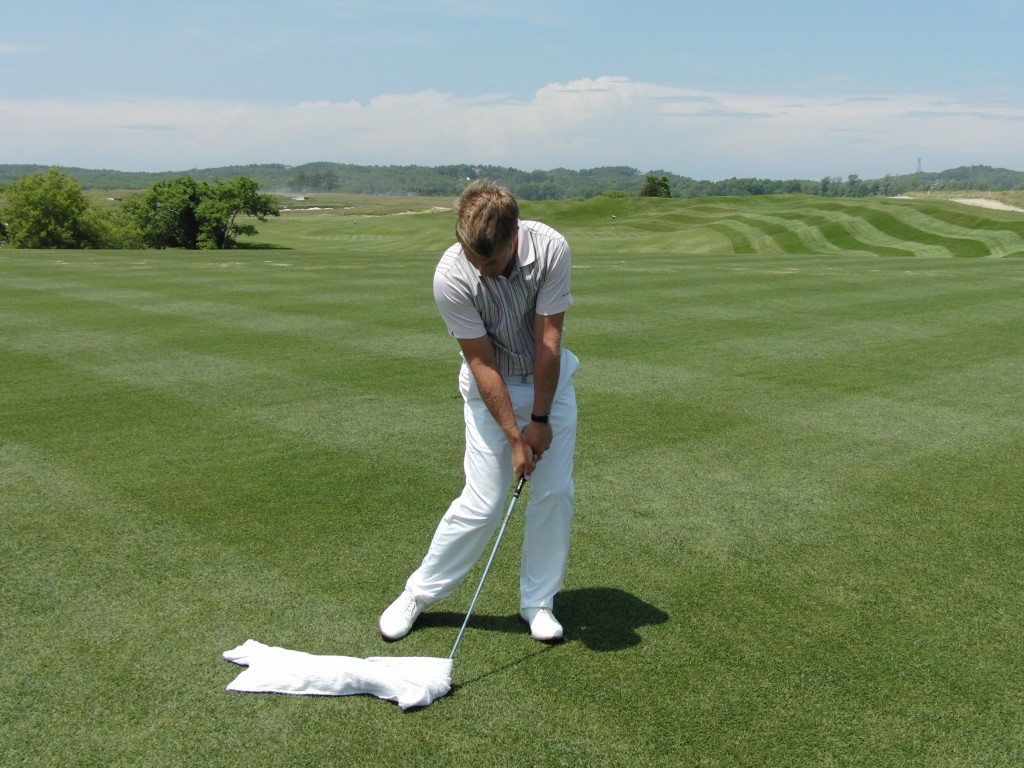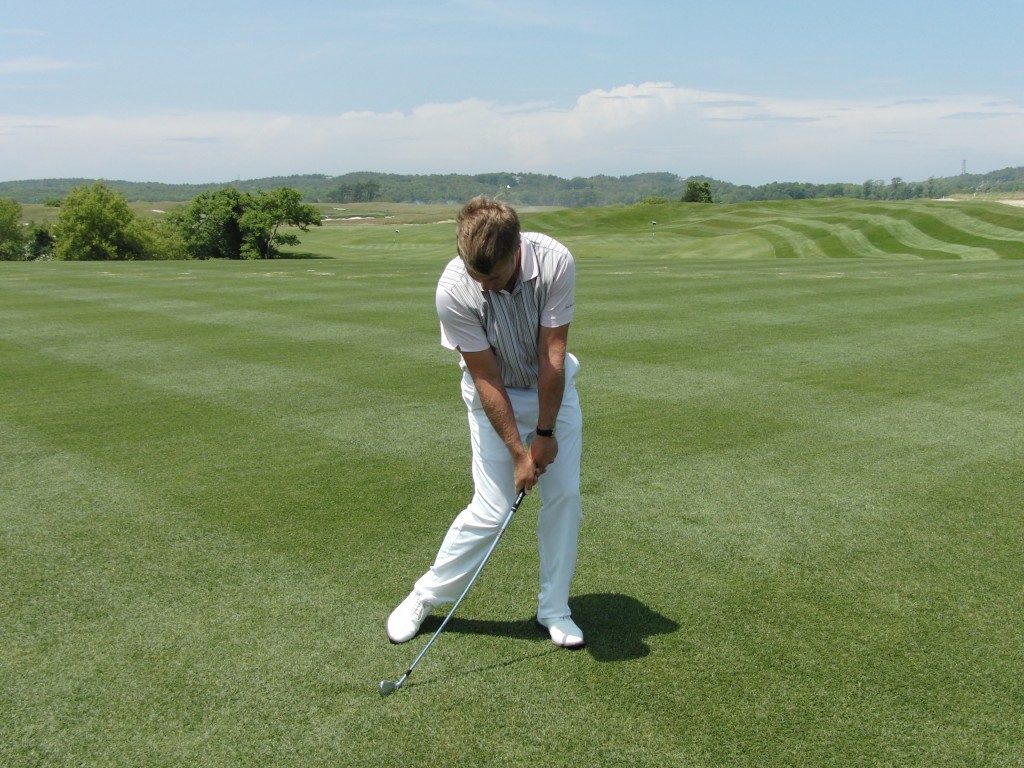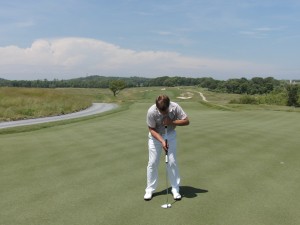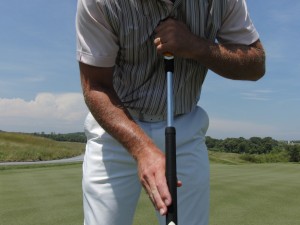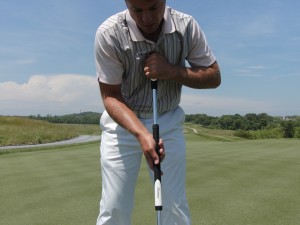Pitching Help
/
When it comes to the shortgame it is vital that the golfer strikes the ball and the ground on every shot - and preferably in that order! Golfers run into trouble when the club contacts the ground before the ball, particularly with a closing clubface as the leading edge will dig into the turf. There is no quicker way to deplete confidence than to start alternating between bladed and heavy pitch shots.
A helpful drill is to practice hitting 40-60 yard pitch shots with an 8-iron. Try to get the ball up in the air, with a slight cut action and have it land softly. This will give you the sense of keeping the face open and using the bounce of the club correctly. It will also prevent the wrists from being overly active. A feeling to key in on is the sense of swinging to the inside after impact (as pictured below). Be sure to keep the face open or looking up while the club tracks to the inside as this will prevent the leading edge from digging. This is rapidly becoming one of my favorite drills!



